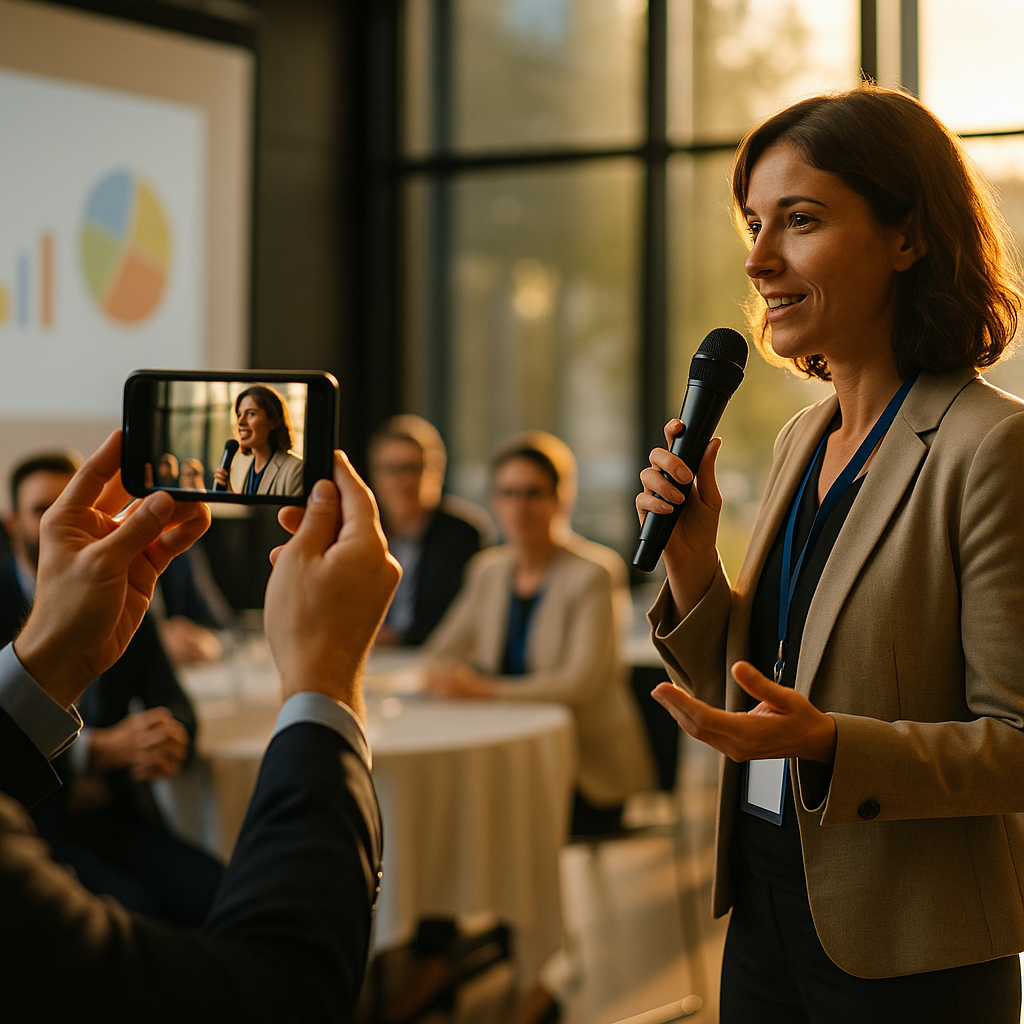The primary keyword: B2B influencer marketing case study.
B2B influencer marketing is often overlooked in favor of consumer campaigns, yet it can be a major differentiator for brands. In this B2B influencer marketing case study, discover how a tech company outshined its competition at a niche conference, driving visibility and concrete leads—proving influencer partnerships aren’t just for consumer brands.
Identifying the Right Influencer Partnerships for Events
The first critical step in this B2B influencer marketing case study was pinpointing high-value partnerships tailored for the upcoming event. The brand, a SaaS platform specializing in supply chain analytics, aimed to maximize its impact at ProcureTech Summit 2025. With thousands of attendees and a highly specialized audience, success depended on aligning with authoritative voices.
The marketing team conducted an audience mapping exercise, identifying influencers who:
- Consistently published data-driven insights in supply chain innovation
- Had engaged followings on LinkedIn and X (formerly Twitter)
- Were likely to attend or cover ProcureTech Summit 2025
Relevant metrics—like engagement rates and previous conference influence—were prioritized over mere follower counts. The brand reached out offering value: compensated speaking slots, branded content campaigns, and pre-event webinars.
Strategic Influencer Activation Before the Conference
Driving awareness before the event meant mobilizing influencers ahead of time. The brand implemented a dual-phase activation:
- Thought Leadership Campaigns: Weeks before the summit, selected influencers co-hosted LinkedIn Live sessions, discussing supply chain trends. These sessions positioned the brand as a knowledge partner rather than a sponsor.
- Personalized Content Bundles: Each influencer received exclusive data insights and branded creative assets, enabling them to spark authentic conversations about industry pain points the brand solved.
According to recent HubSpot data (2025), B2B purchase decisions are influenced by expert recommendations in 81% of cases. By tapping into influencers’ authority, the brand generated anticipation and inbound queries—setting the stage for event success.
Influencer-Led Engagement Onsite at ProcureTech Summit 2025
Live, targeted engagement during the event transformed attendees into active participants. Influencers did not merely post updates; they embedded themselves within the brand’s onsite experience:
- Moderating expert panels hosted at the brand’s booth
- Leading roundtable discussions on emerging tech and challenges
- Creating real-time “hot takes” and video coverage distributed across LinkedIn, X, and YouTube
What set this approach apart: influencers weren’t just attendees—they became event destinations themselves. Attendees queued for 1-on-1 strategy sessions with them. Social posts using the campaign hashtag surged by 300% compared to the previous year, significantly outpacing the nearest competitor.
Migrating Social Buzz into Concrete Lead Generation
Generating hype is valuable only if it leads to measurable business outcomes. For this B2B influencer marketing case study, the brand employed precise lead-capturing mechanisms. CTAs in influencer content directed prospects to:
- Exclusive roundtable registrations (accessible only via influencer links)
- Follow-up demo appointments auto-linked to CRM
- Personalized, influencer-authored reports downloadable via gated forms
The results were clear: influenced leads accounted for 41% of all high-quality contacts generated during the conference. Post-event surveys revealed that 67% of prospects cited influencer-led content as their reason for engaging with the brand.
Measuring Success and Optimizing for Future Events
To ensure this influencer strategy delivered lasting ROI, the brand tracked results using rigorous analytics practices:
- Attribution models linked influencer touchpoints with pipeline velocity
- Engagement tracking across all social and event-driven digital assets
- Feedback loops with influencers, gathering qualitative insights for continuous improvement
The shift was evident. Compared to the same event’s previous iteration, the brand saw a 56% jump in booth traffic, a 38% increase in qualified meetings booked, and a 2.3x improvement in post-event content engagement rates.
This data-centric approach highlights a vital takeaway: B2B influencer marketing at events is not a “one-off tactic”, but an integrated, measurable growth lever.
Lessons Learned: What Sets B2B Event Influencer Strategies Apart?
This B2B influencer marketing case study reveals practical lessons for brands looking to excel at niche conferences:
- Deep alignment: Influencers need genuine expertise—not just an audience. Vet credibility and contextual relevance rigorously.
- Pre, during, and post-event strategy: Staged activation ensures ongoing momentum and sustained lead flow.
- Value exchange: Industry leaders expect more than compensation. Provide exclusive access, collaborative opportunities, and visibility.
- Analytics discipline: Establish closed-loop measurement from first-touch to revenue outcomes before launching your campaign.
By treating influencers as event partners—not just amplifiers—B2B brands can unlock higher credibility, deeper engagement, and real pipeline impact.
FAQs: B2B Influencer Marketing for Conferences and Events
-
How do you choose the right influencers for a B2B conference?
Focus on credibility, niche relevance, and direct audience overlap. Evaluate engagement quality and past event influence rather than just follower counts. Partner with those respected by your buyers.
-
What type of content works best for B2B event influencer campaigns?
Thought leadership, live discussions, real-time event analysis, and exclusive insights tend to generate the most engagement among niche professionals.
-
How do you track the ROI of influencer-driven event marketing?
Use UTM tracking, CRM-connected CTAs, and rigorous attribution models. Map all influencer-driven touchpoints to lead generation, sales pipeline, and closed deals.
-
How early should you engage influencers before an industry event?
Begin outreach and content planning at least 8-12 weeks out, allowing for content briefs, warming up the audience, and collaborative pre-event webinars or roundtables.
-
Is influencer marketing only effective for large conferences?
No—targeted partnerships can drive outsized impact at niche and regional events, providing focused engagement and higher conversion within specialized segments.
B2B influencer marketing is a proven driver of event success when applied strategically. By selecting credible partners, activating them across multiple stages, and measuring rigorously, this case shows B2B brands can dominate niche conferences and achieve measurable business growth.
